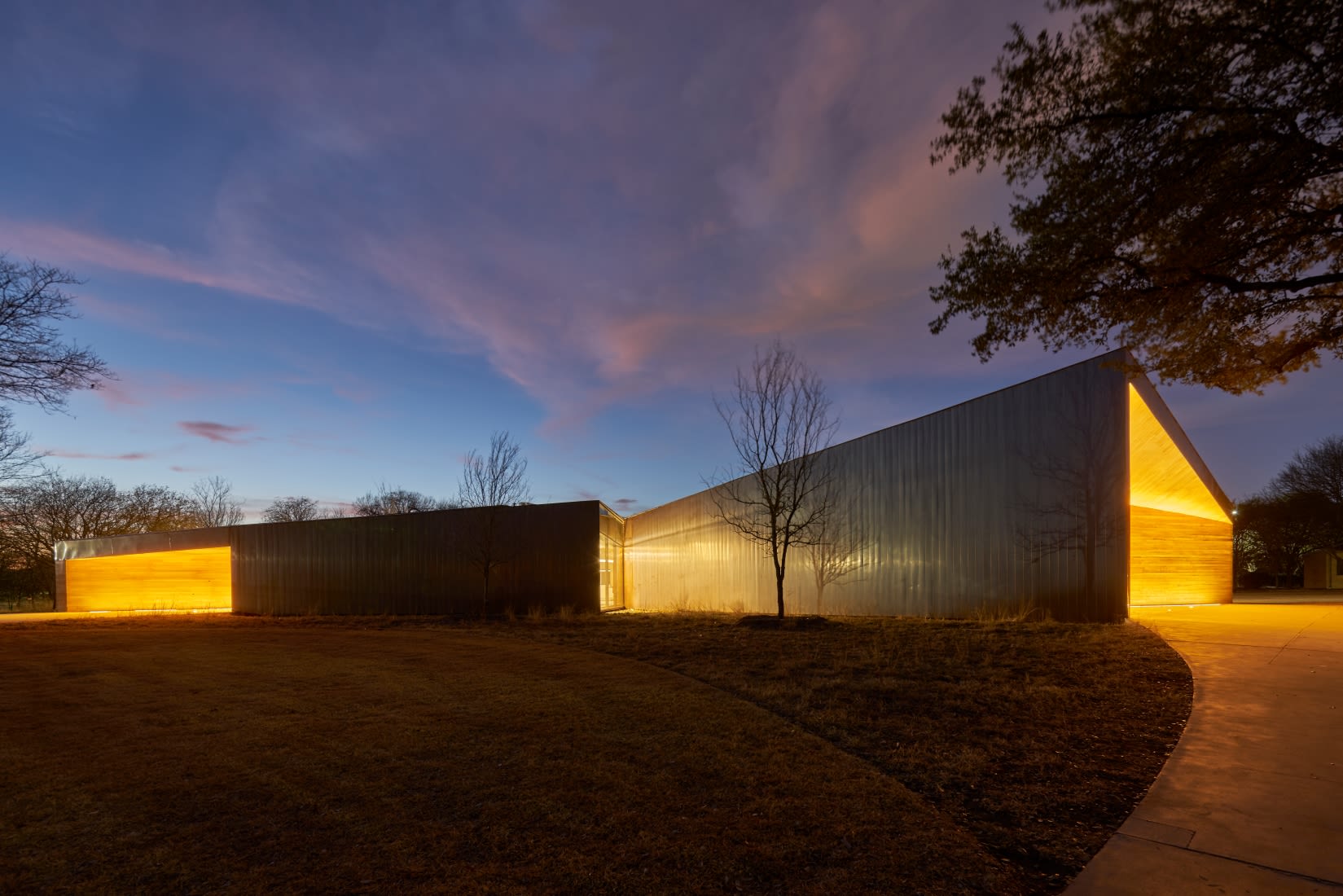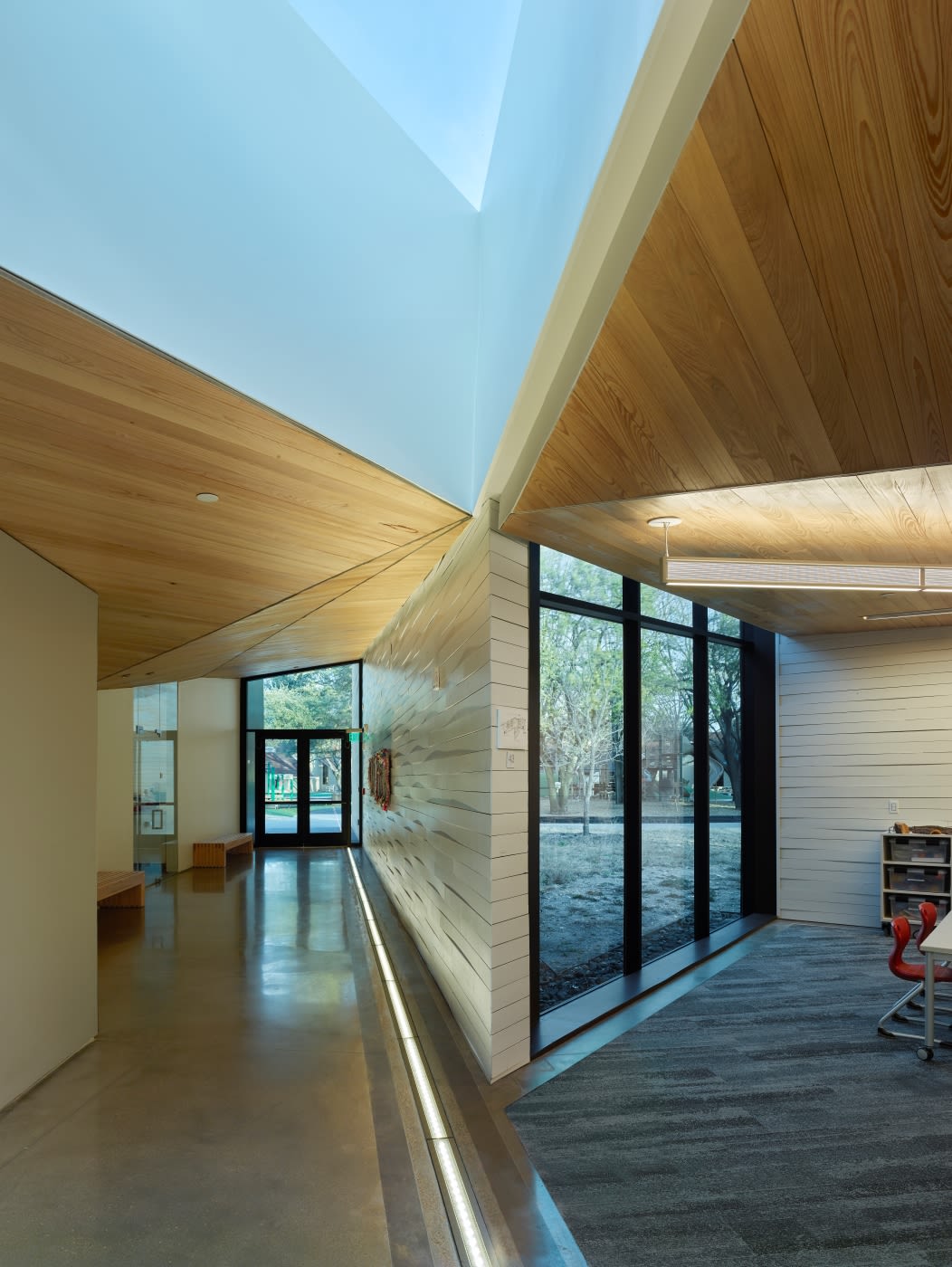
Location: Dallas, Texas
Completion: 2018
Scope: Interior Lighting and Exterior Facade
Design Team: Marlon Blackwell Architects
Photography: Tim Hursely
Taking root from the school’s start in a farmhouse, the new science lab gathers cues from school history and the pastoral landscape. Encouraging exploration, the structure folds and reveals, the roof plane inverts and compresses, pushing and pulling at the idea of interior space. The lighting too, is somewhat unconventional. Respecting the roof/ceiling expression of form and material, lighting is primarily ground-mounted or suspended. Lighting for the connection corridor starts outside, in the ground of the east porch. It draws the student in, passing the various classrooms and learning kitchen, illuminating the undulating birch slat wall which acts as a reflector, along with the light cypress ceiling. The line continues past robotics and woodworking classrooms and exits to the far end of the south porch. The architect requested that the lighting be honest, yet as transparent as possible. Students should experience the building systems, and be able to touch and interact with them.
Encouraging student exploration, and focused hands‐on learning are a part of the teaching philosophy here. The lighting design strives to assist these goals to express and respect the form and materials, leaving them as uninterrupted components of the architectural landscape.
In the early schematic design process, the architect collaborated with us to identify which of the daylight apertures would provide usable general and task lighting. Once we identified those daylighting zones, we worked to develop an interior electric lighting scheme that filled in the gaps and complemented the unique architecture, by day and by night, as the facility is used for evening events and fundraisers. After considering many schemes a general lighting layer of indirect, suspended, minimal profile, linear pendants was selected. The pendants are placed to accentuate the changing ceiling plane angles in the classroom spaces.
In the evening the porches glow with an invitation to enter and explore. The school is thrilled with their new building and is pursuing more campus projects with this design team.
 | 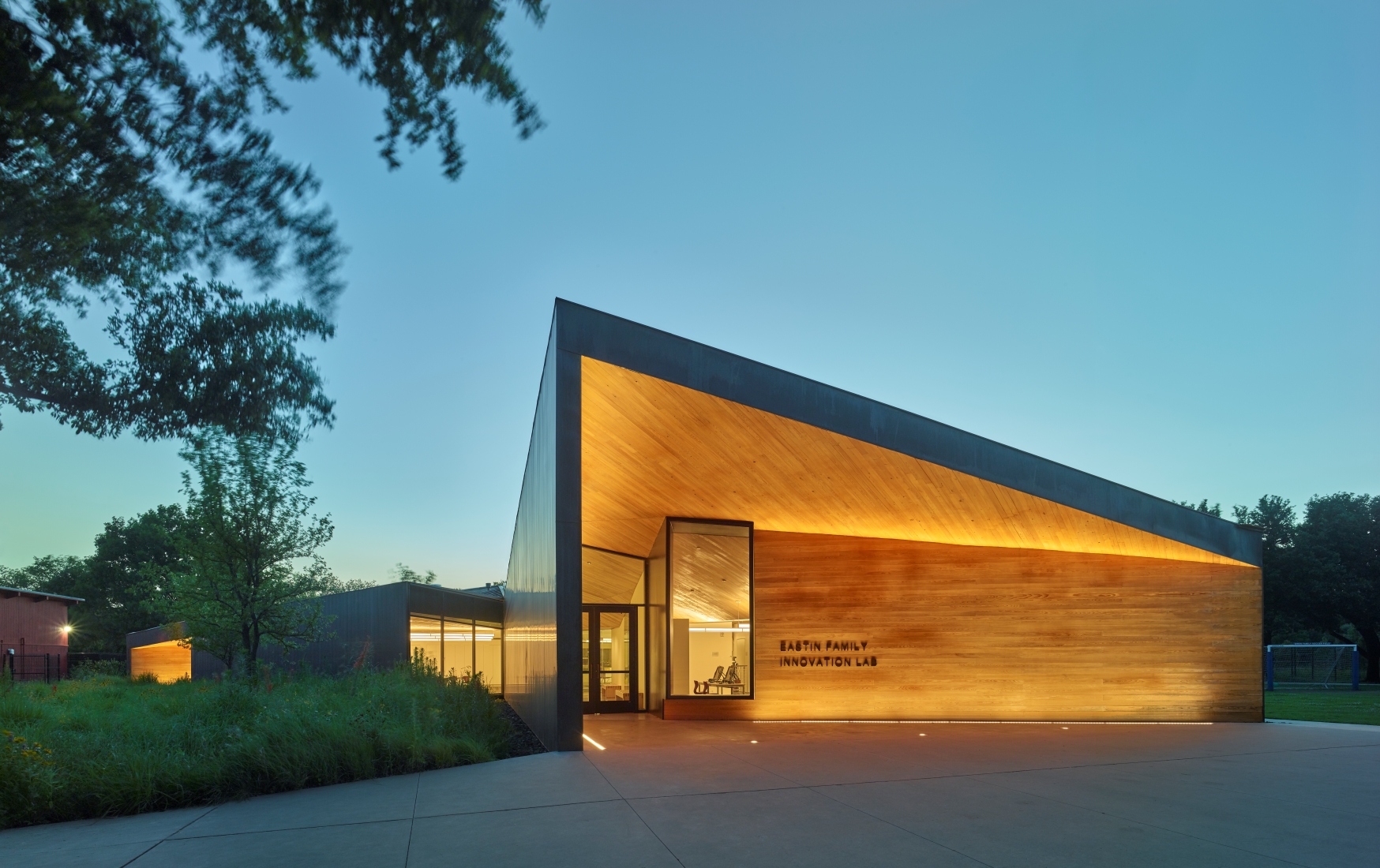 |
Two linear elements and three in-ground uplights give each porch a welcoming atmosphere.

Children learn that social connections are as important as academic ones in the connection corridor, where the architectural, learning and social networks come together. All classrooms and social spaces connect to this corridor. The wall and ceiling are major lighting contributors. Position and tilt of the in-ground linear fixture accentuates wall texture and allows for lighting flat art objects.
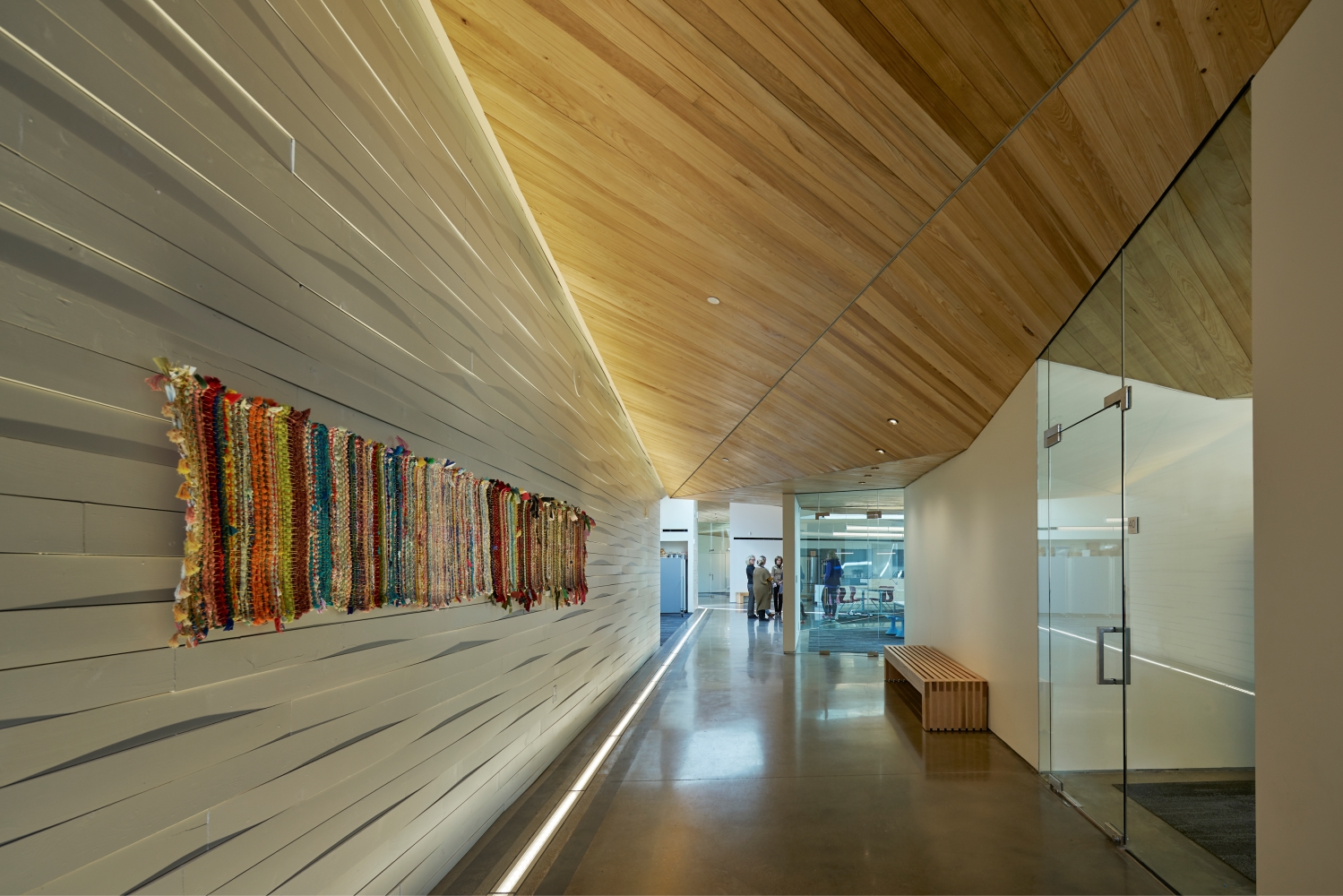
Extensive in‐house mockups using the ceiling cypress material were conducted to understand how close the suspended lighting could come to the ceiling plane without causing undue hot spots. We experimented with various top coat sealants and reported back to the architect the recommended sealant type, number of and coats, and importantly, the direction of application that would assist with light distribution and not produce a sheen with unwanted specularity or striations.
| This kitchen classroom brings together the activities from the adjacent barn and business learning. One course is to raise chickens and sell the eggs. At the learning kitchen, rings of light drop low over the teaching island to encourage interaction, sharing, and provide excellent task illumination. They also are a nod to the circularity of agriculture. | 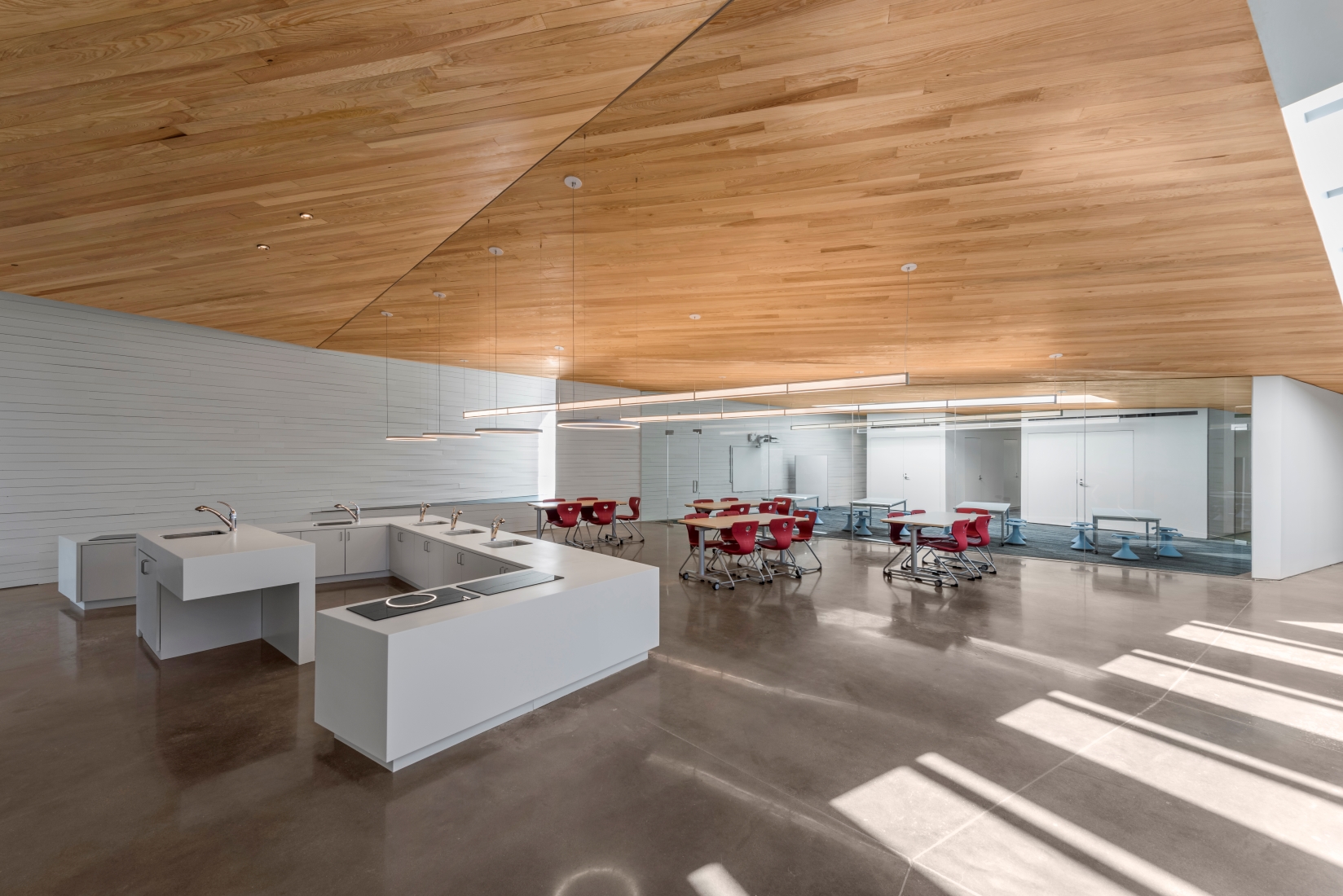 | |
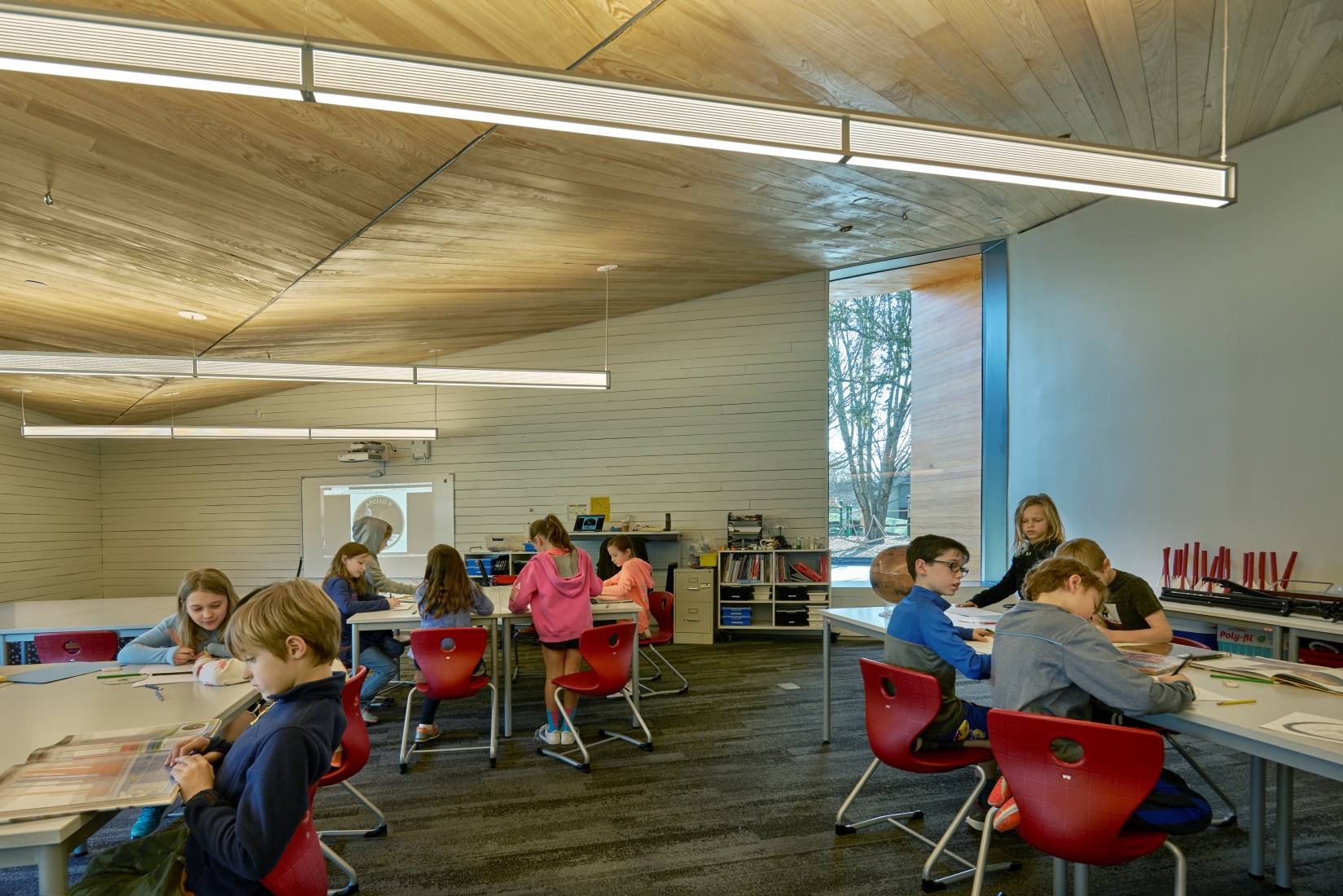
Science and robotics classrooms have sharply inverted, low roof/ceiling structures where lighting placement was carefully studied to provide ambient indirect lighting without glare or sheen.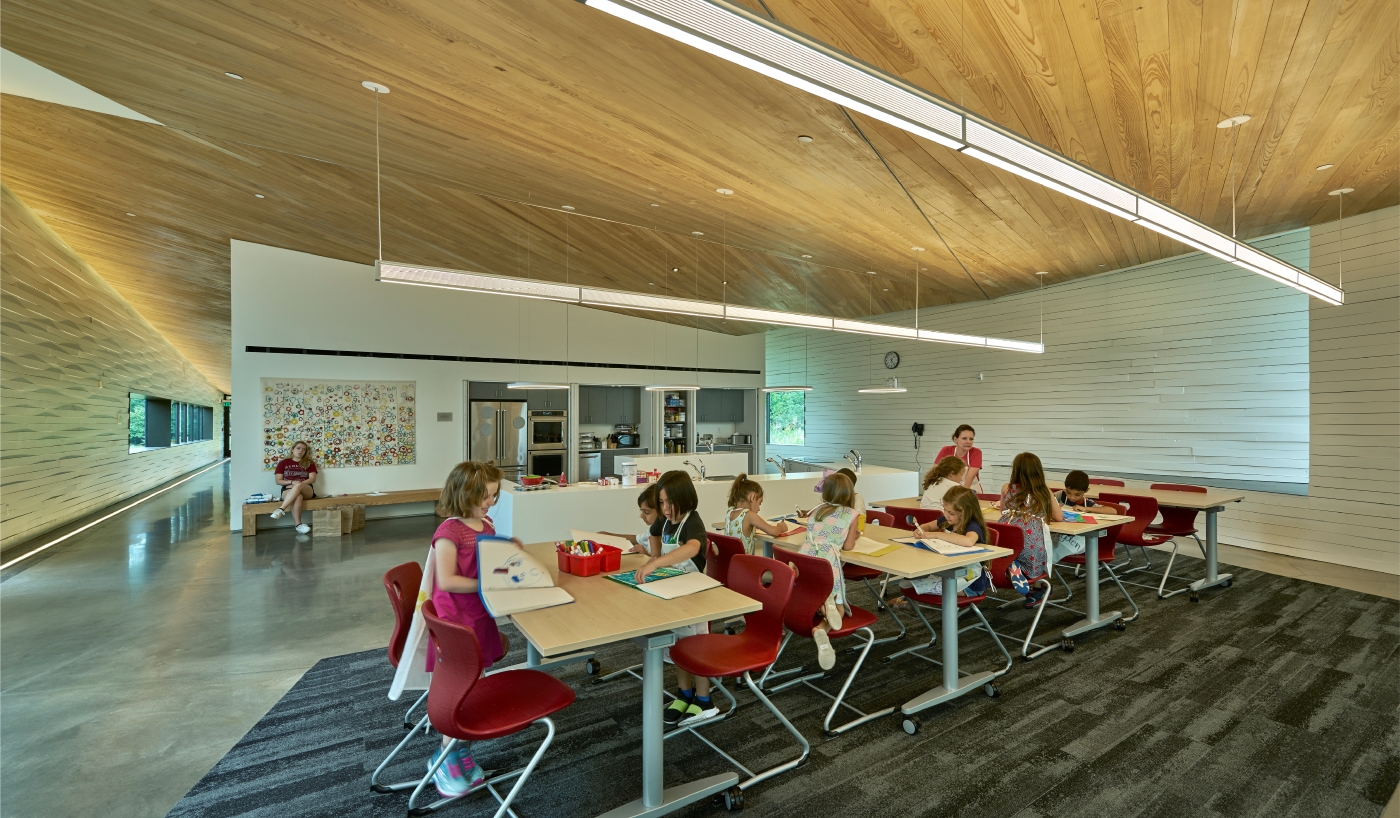
The exterior lighting scheme is meant to be a seamless continuation of the interior in-grade uplighting scheme. To achieve this effect the design team had to carefully detail each interior‐to‐exterior condition with photometric simulations and multiple mockups.
Finally, the selection and last minute‐change of the control system afforded us an app‐friendly way to achieve all the performance control needs, such as teacher‐selected light levels and scenes, occupancy sensing and daylight harvesting, and also allowed the teacher to give the students the ability to have a lighting or building‐system focused session where they could manipulate some dimming levels, experience what various levels and scenes feel like relative to the daylight, and how they could change them to create different focus or moods in the rooms. The facilities department and the students can view and create energy usage reports, to understand the impact of technologies such as occupancy sensors and daylight harvesting sensors.


